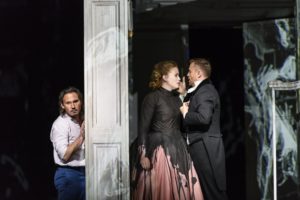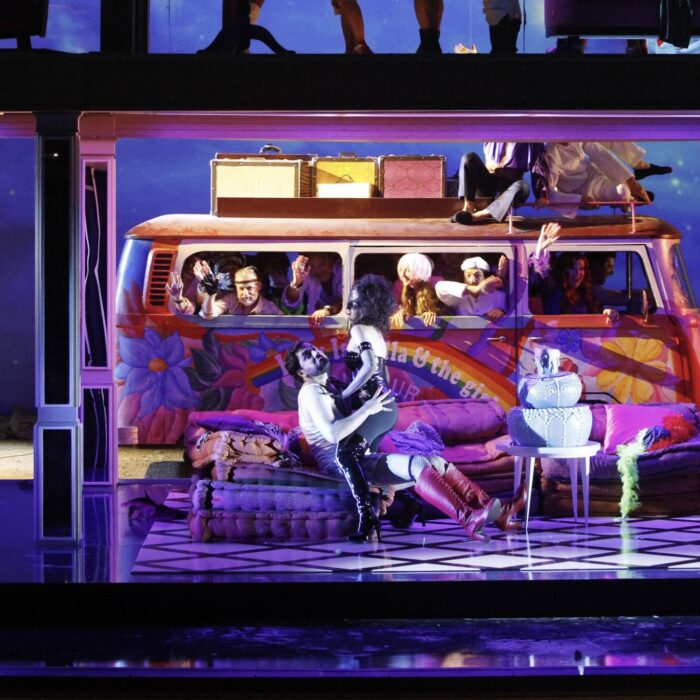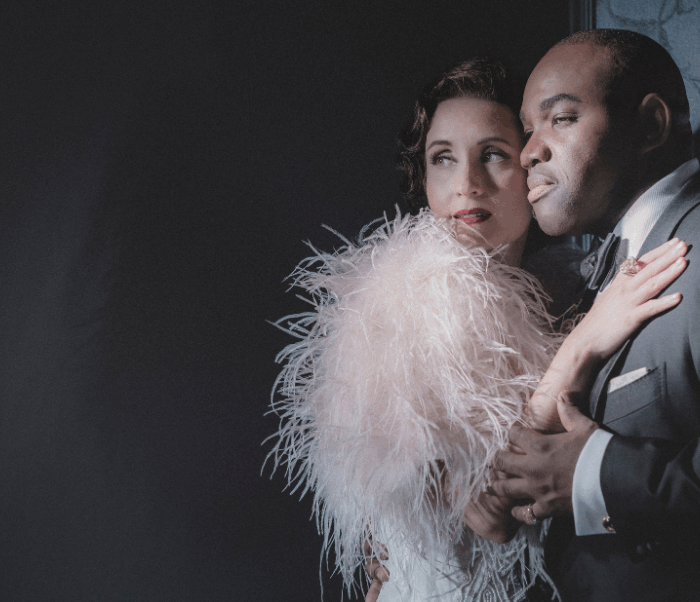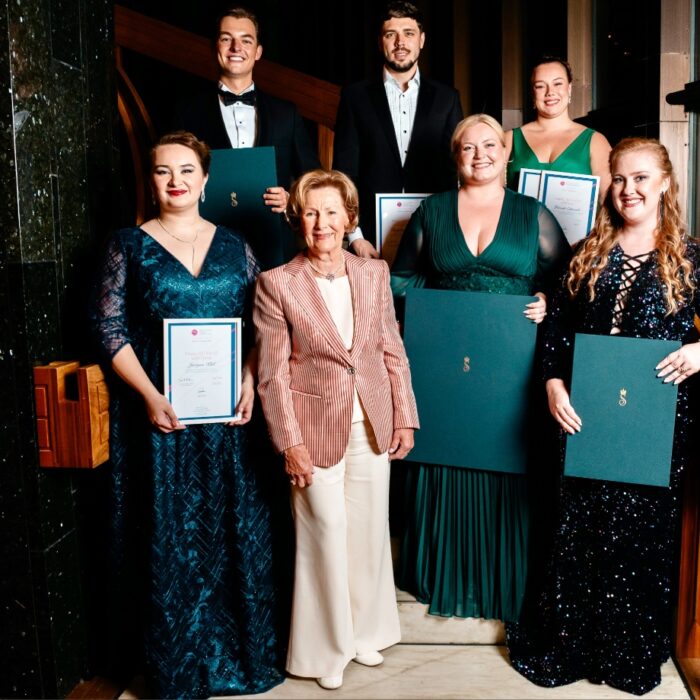
Royal Opera House 2017-18 Review: Don Giovanni
While Ildebrando d’Arcangelo Shines, The Audience Doesn’t Make Don Giovanni’s Conquest List
By Sophia LambtonSo much is Don Juan’s tale the stuff of legend that it lends itself as easily to various interpretations as Greek myths. For every legendary story that encounters many incarnations – be it Tristan and Isolde’s love, Medea’s filicide or Romeo and Juliet – there comes a time when it is not only acceptable, but fascinating to encounter the familiar narrative against a novel backdrop or within a different context.
What makes Kasper Holten’s “Don Giovanni” unexciting is it doesn’t seem to have one.
The production isn’t lacking in aestheticism or a visual theme: unlike many recent Royal Opera productions that fall prey to disorganized, badly coordinated staging, this one pertains to a rigid pattern of colors and shapes: white-grey marble, black in the mourning garb of Donna Anna, pastel pink and cobalt blue. It’s a whitewashed version of attire in the 18th century – although costumes by Anja Vang Kragh deliberately transcend those boundaries. With puffy crinoline-skirt dresses manifesting art deco or graffiti-like spray patterns, the garments don’t mirror a particular era. Some are magnetic. How they tie-in to the concept is another matter.
Novelty That Wears Off Without Major Effect
Holten’s visual symbolism of the tale relies on one revolving set: a light gray box whose square compartments suggest rooms inside a palace. The stories of all characters take place within this prism. From different angles it creates diverse impressions: at times it looks like an open shoebox; at others – a parking garage. As its diameter fills less than two-thirds of the stage, the rest is left black.
But what distracts the audience is not the box itself, but the incessant video projections that purport to make this spectacle into a show. Sometimes obvious and sometimes arbitrary, every kind of moving image comes our way: from a strange, navy blue vortex-like depiction of the Milky Way, to blood dripping down (the murdered Commendatore’s, of course), to the scribbles of women’s names from the Don’s “little black book,” to zigzags and odd shapes and rosebuds. There are moments when they make for pretty pictures; palatable backgrounds that would work well in the context of an exhibition at a museum or a gallery.
But very soon the novelty wears off. It’s hard to tell the meaning behind every changing image and the constant flickering reminds the viewer of computer games or rusty 1980s television shows that tried to mimic outer space before advancing CGI techniques usurped the genre. Maybe 30 years ago all these projections could have been intriguing and experimental fare. For a contemporary audience – a large percent of whom most likely spends their days before computer screens – it’s now old hat.
Other elements speak to genres even farther away from the opera world. As he disintegrates into oblivion, Don Giovanni has visions of zombies incarnate – as played by chorus members dressed in white, illuminated ominously by the lighting. The impression this creates lies somewhere between bad Halloween costumes and low budget horror films.
More Jokester Than Charmer
Sadly this is not where this production’s disappointment ends. All too often singers lack in vigor. While the orchestra is smaller than it is for Romantic operas, there’s a classical basso continuo, it’s opera buffa with more recitatives than fortissimo moments – the drama is nevertheless an intense, heady experience. Performances in this production for the most part are not.
Mariusz Kwiecień’s Don Giovanni captures the reckless, wayward approach that ultimately costs the seducer his life. His baritone voice is largely potent and the final moments of his pleading with the ghost of Donna Anna’s father well exemplify his last attempt to hold on to not only life but masculinity and power.
That said, for the majority of the production Kwiecień maneuvers his voice so that it is more of a swagger than a resolute or emboldened tone; even going so far as to deliberately sing falsetto on the line, “La nobilità ha dipinta negli occhi l’onestà” (“Nobility can be seen in your eyes”) when romancing Zerlina. The voice wavers a little in its effort to accentuate; both the “mano” and “lontano” at the start of “Là ci darem la mano” sound overly affected. Overall the impression seems to be that Don Giovanni may be more of a joker, a prankster, perhaps, than a compulsive and addicted lecher. With his playful body language and frequently insouciant approach to the vocal seductions, this Don Giovanni may seem a little more inebriated than he does hungry with lust.
Striking the Right Balance
It is Ildebrando D’Arcangelo’s Leporello who rightfully assumes the opera’s comedic focus – evoking the mock-dramatic tones in his brazen bass register with a manifest relish. Tackling the vocal part easily, D’Arcangelo’s Leporello is no kind of court jester – he is cavalier, playful, theatrical; coveting the great master’s spotlight. So deadpan is his approach to the catalogue aria that his commands of “Leggete con me” – “Read it [the list] with me” – simulate a lawyer’s tones in court with presentations of Exhibits “A” and “B”. Despite emphasising his shock in the numbers – notably the repeated phrase, “Ma, in Ispagna, son già mille in tre” (“But in Spain it’s already one-thousand and three women”) – D’Arcangelo never lets his character devolve into a stereotype. Instead he frequently exemplifies the compromises Leporello faces between various states and roles: dutiful servant, hedonist, and a man envying his superior.
Right Choices?
The three sopranos are well chosen for their roles in terms of vocal timbre: Rachel Willis-Sørensen’s ceremonious, cavernous voice befits Donna Anna; Hrachuhi Bassenz’s lighter but somewhat dark instrument suits the mercurial Donna Elvira; Chen Reiss offers Zerlina a girlish, very high-pitched, slender sound.
Nevertheless the sopranos elaborate their heroines’ characters to different degrees. Willis-Sørensen’s lowest register is resplendent and commanding; painting in viscous detail Donna Anna’s willfulness and independence. Tenderness percolates her plea to fiancé Don Ottavio “Crudele? Ah no, mio bene!” and her rendition of “Non mi dir” is a well-measured balance between indignant attacks that recall her experience with Don Giovanni and the soothing, slow diminuendi she uses to placate her lover. At its most potent and secure, Willis-Sørensen’s voice sounds almost Wagnerian; even, in moments, it reminds one of Kirsten Flagstad. But there are occasionally deficiencies in the higher register that leads notes to be strained or else lacking in resonance. They are not sustained well enough by a vibrato. More work to strengthen this section could go a long way.
Hrachuhi Bassenz’s voice transports itself well over Donna Elvira’s persistently changing approaches: her one-sided love-hate relationship with Don Giovanni. The attacks are usually well-placed in this regard; shifting for the most part easily between piano moments of tenderness and abrupt fortes of acrid resentment. But, considering the full gamut of Donna Elvira’s emotions, she doesn’t always project her voice with sufficient vibrato – or even use ample crescendi – to make her capricious transitions convincing. With some shaky coloratura in the “Mi tradi quell’alma ingrata” aria, she tends to yield to gestures such as raised eyebrows to embody her personage.
Chen Reiss’s Zerlina exploits her physical gestures and expressions well to depict the girl’s nubile naivety. With a slender voice, the execution of docile, gentle diminuendi on words such as “balsamo” in the “Vedrai, carino” aria prove that Reiss is more than capable of applying a characteristic interpretation to vocalization. However, hers is a thin instrument that at times doesn’t carry over an orchestra. A better use of vibrato could serve to remedy that.
Shaky Ground
As the deus-ex-machina Commendatore, Willard W. White infuses the production with the infernal, nefarious quality it requires; although the part is small, it’s evidently crucial – and his final commands from the nether world of “Rispondimi” to Don Giovanni resound with a supernatural and ominous clangor.
Elsewhere, as the two largely stranded bridegrooms, both Anatoli Sivko and Pavol Breslik have some problems tackling the roles of Masetto and Don Ottavio respectively. While Sivko sustains the vocal line well but doesn’t inject his part with the anxiety and impatience it should have, Breslik’s Don Ottavio stands mostly over very shaky vocal ground. His aria “Dalla sua pace” sounds noticeably unstable, with certain lines appearing hard to finish. A touch of affectation also hinders his performance.
Conductor Marc Minkowski lends the music adroit tempi in a thoroughly traditional interpretation, ensuring that its rhythm and attacks are on-point and premeditated. For the most part the sound remains clean – but there are moments when the strings cede to a little sourness and brass begin to rumble. At some points it appears there is a disparity between the bass parts and the principal melody, with cellos and brass instruments resounding more loudly than violins.
Skipping the majority of the epilogue that ends “Don Giovanni,” the production seeks to conclude the famed tale on a more melodramatic, Greek tragedy kind of note. It feels unfinished. Scholars can debate whether or not the cut is right. The production’s disappointment nonetheless does not revolve around that form of incompletion – but its lack of both coherence and a concept.


